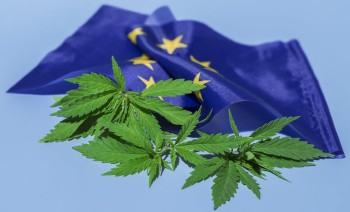7 More Scientific Studies show that Marijuana is Safe
7 New Studies Show That Cannabis is Safe from CannabisNet on Vimeo.
There are very few substances in this world that would be 100 percent harmless to the human body. No psychoactive substance is totally harmless, but science proves that marijuana is safer than many other substances. Science also proves that is one of the more significant substances available when it comes to therapeutic treatment.
A recent study in Canada has proven that marijuana is safe to use for medicinal purposes over a long period of time. The scientific study was specifically focused on people suffering from chronic pain and they were tested over a year by taking in 2.5 grams of Canadian marijuana daily. How they used it was up to them; they could smoke, vaporize or eat it. What they found was, that not only was there no adverse side effects from using marijuana, but also that quality of life and even the mood of the patients improved significantly. Other than some dizziness, nausea, headaches and some respiratory discomfort because of smoking, there were no other observed side effects. They also found that pharmaceutical painkillers used as an alternative to treat chronic pain in the other test group, proved to be less effective and more dangerous than marijuana.
By 2024, there have been over 32,000 cannabis studies published over the past 10 years.
More studies done since 2016

Lower BMI detected when Marijuana is consumed- Marijuana consumers have on average a lower body mass index than non-consumers. In a study done at the University of Miami in July, 2016, researchers found that female users that consume marijuana daily overtime have a body mass index of about 3.1 percent lower than non-users, while male consumers have approximately 2.7 % lower BMI than non-smokers. A lower BMI contributes to a lower risk of heart diseases and other health issues.

No Adversely Impact on IQ- Longitudinal data was published in January of 2016 in the Proceedings of the National Academy of Science stating that the collective use of marijuana by teenagers has no harmful effect on intelligence. Investigators studied intellectual performances in 2 longitudinal groups of teen twins. At the age of 9 to 12 the participants were tested for intelligence before they were exposed to marijuana and then again at the age of 17 to 20 years of age. The conclusion: On the long longitudinal study done on marijuana use and IQ change, little evidence was found that marijuana exposure to adolescents had any direct effect on intellectual decline.

Marijuana users have a better In-Hospital Survival rate- Researchers from the University of Northern Colorado, Colorado State University and the University of Alabama studied the relationship between marijuana use and health outcomes in 3.9 hospitalized patients nationwide. They looked at the correlation between marijuana use and survival rates, specifically when they suffered from cancer. The conclusion was that marijuana users had a significantly lower rate of mortality while in hospital in comparison to cancer or other patients.

Unlike Alcohol, smoking marijuana lowers aggression- Investigators from the University in Frankfurt, Germany and Maastricht University of the Netherlands, evaluated the response of subjects to stimuli of aggression by exposure to cannabis, alcohol and a placebo. The data was published in July, 2016 in the journal of Psychopharmacology. The results were as predicted: aggression in acute alcohol intoxication increased while aggression in acute cannabis intoxication was greatly reduced.

Marijuana Use during Pregnancy likely Overstated- In a literature review published in the journal Obstetrics and Gynecology in October, 2016, investigators from the Washington School of Medicine in St. Louis, reported that the use of tobacco rather than marijuana result in advert events such as children born with a lower weight for their gestational weight when born pre-term. They studied more than 2 dozen relevant case-control studies from 1982 – 2015. The results indicate that an increased risk for adverse neonatal outcome found in women using marijuana while pregnant, is rather the result of co-using tobacco and other factors, and not contributed to the use of marijuana. Although these results neither encourage nor condone usage of marijuana during pregnancy, the lack of significant founding that marijuana contributes to adverse neonatal outcomes, suggests that the focus should rather be on assisting pregnant women by teaching them what the adverse effect on pregnancy is using substances such as tobacco.

Less Money is Spent on Prescription Drugs – In states where medicinal marijuana is legalized, it is found that less money is spent on conventional medication. Researchers studied the relationship between medical marijuana legalization laws and doctors’ prescribing pattern over 3 years (2010 – 2013) in 17 states. They were particularly interested in patients’ spending on and consumption of prescription drugs under Medicare Part D in 9 domains: glaucoma, depression, anxiety, pain, nausea, psychosis, sleeping disorders, spasticity and seizures. In 7 of the 9 domains, the use of prescription use fell drastically. It is estimated that if there would be a nationwide legalization there could be a saving of $468 million dollars annually on drug spending.
OTHER STORIES THAT MAY INTEREST YOU...
FBI ADMITS MARIJUANA MAKES COMMUNITIES SAFER, CLICK HERE.
OR..

DOCTORS STUDY CANNABIS, FIND NOTHING WRONG, CLICK HERE.








